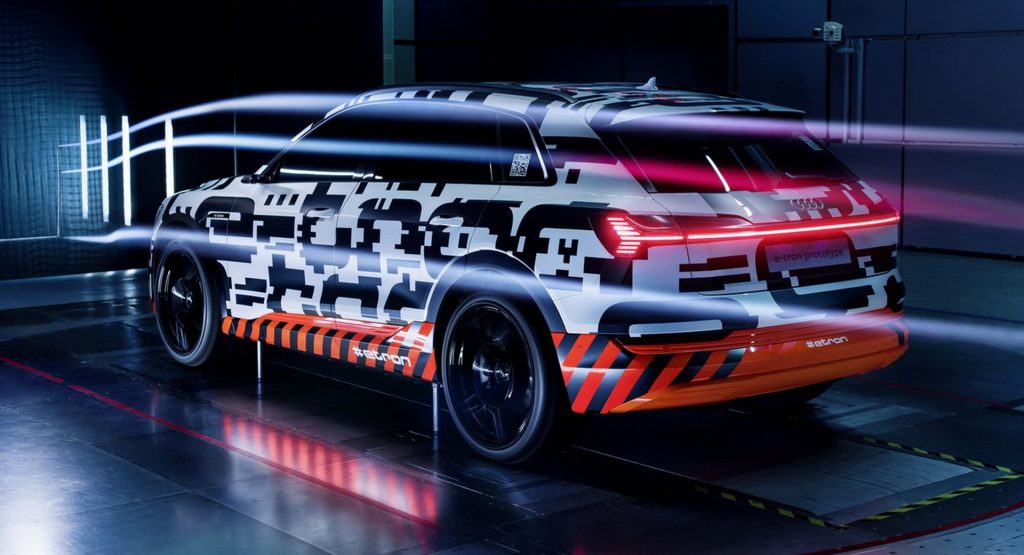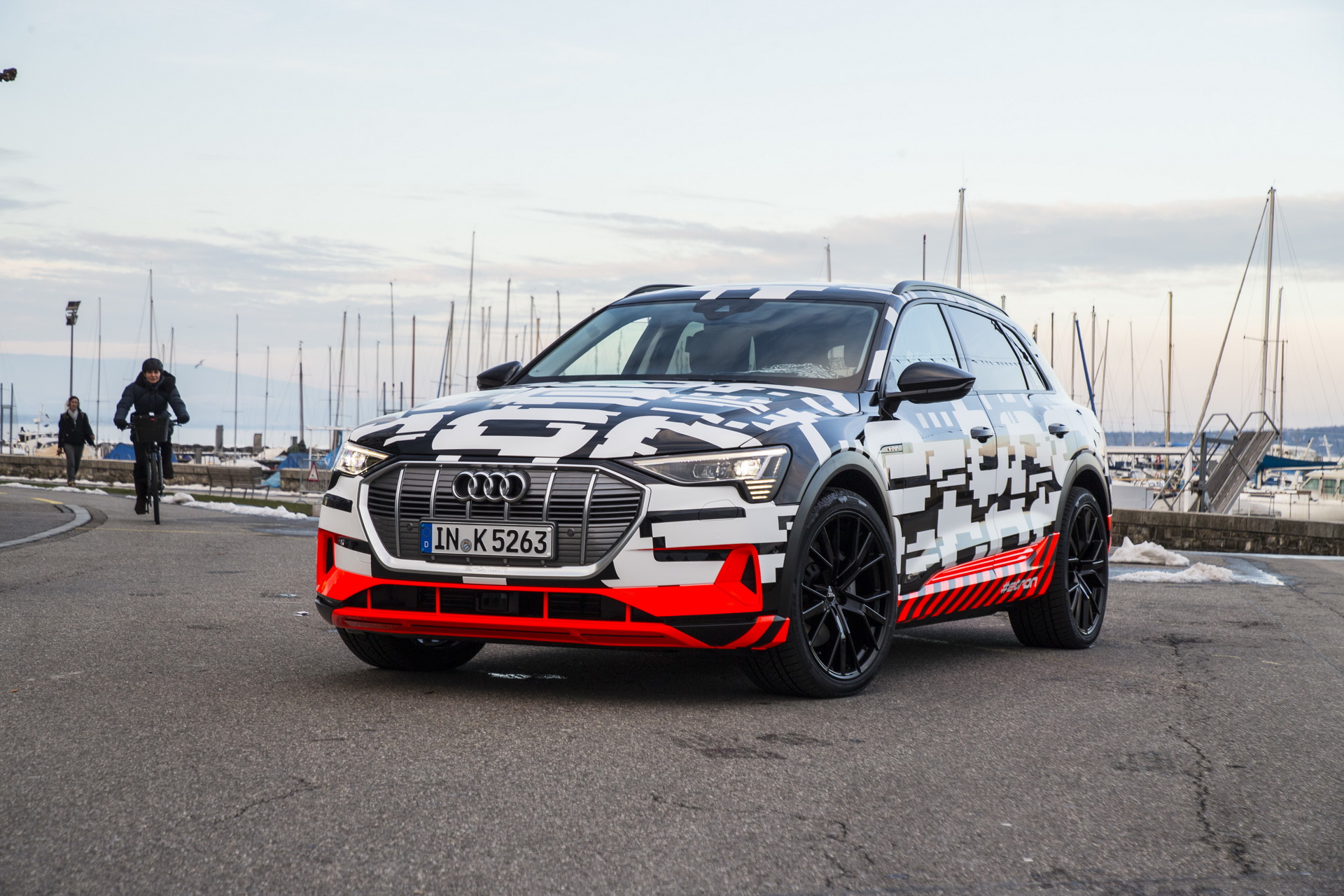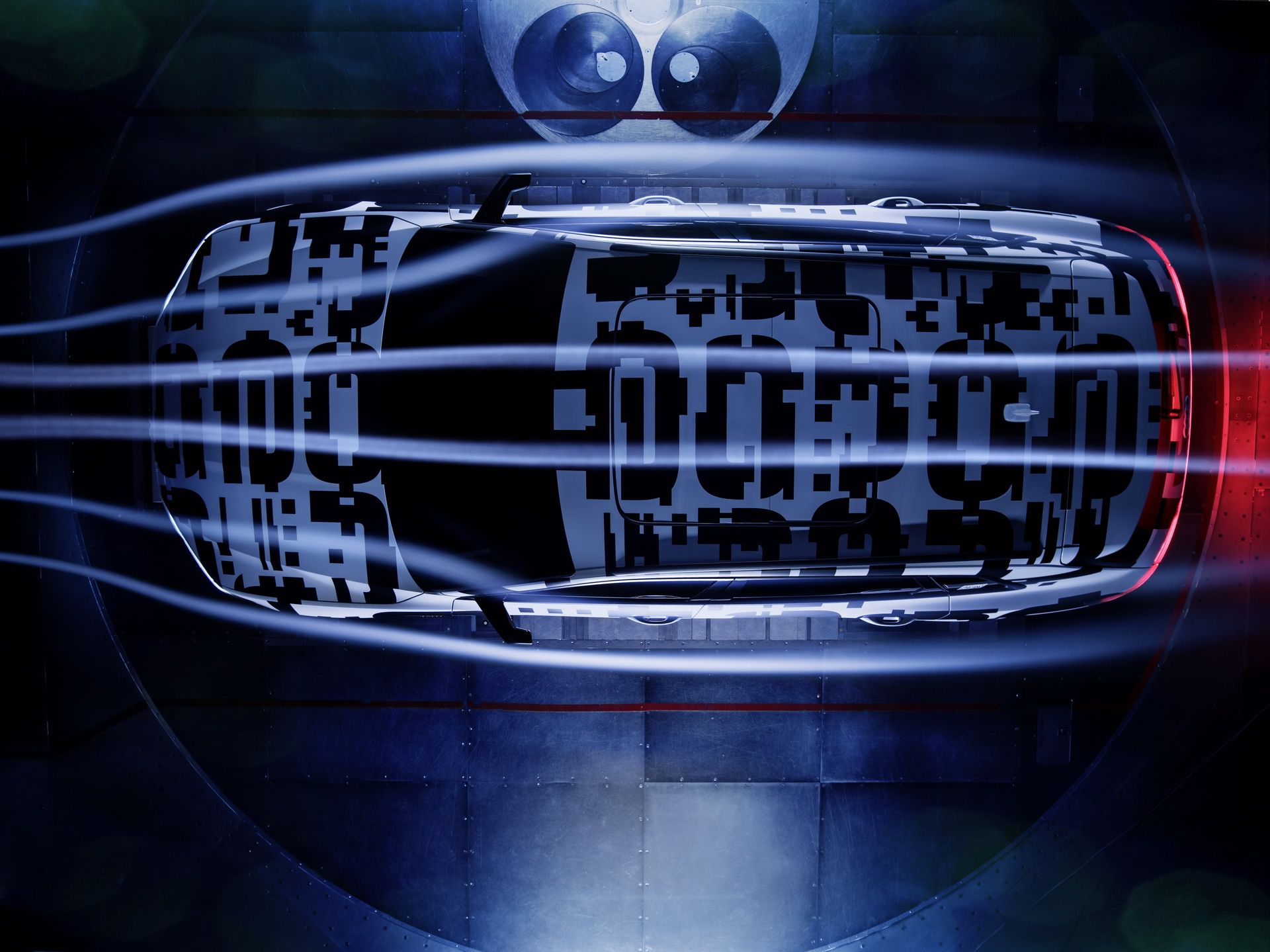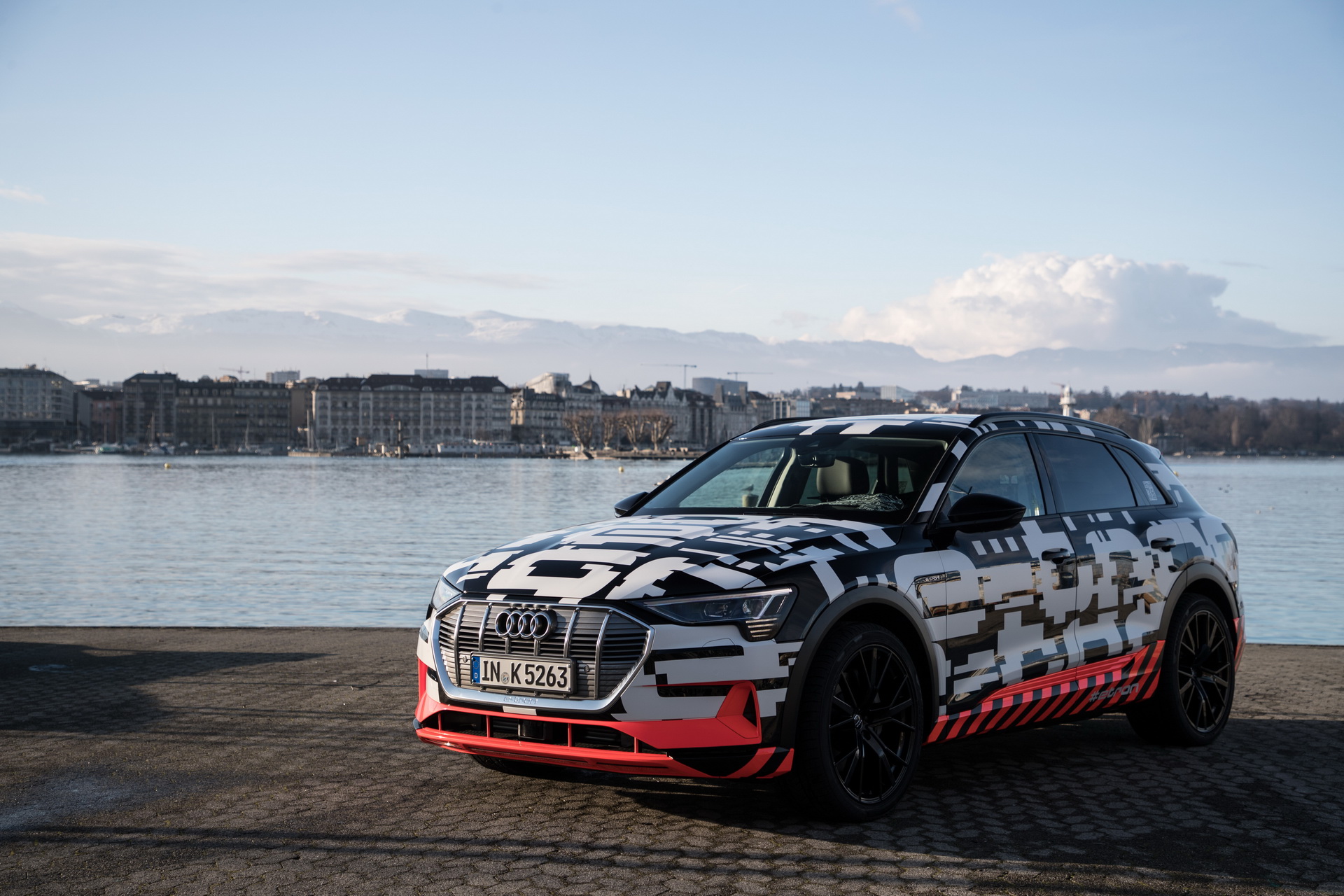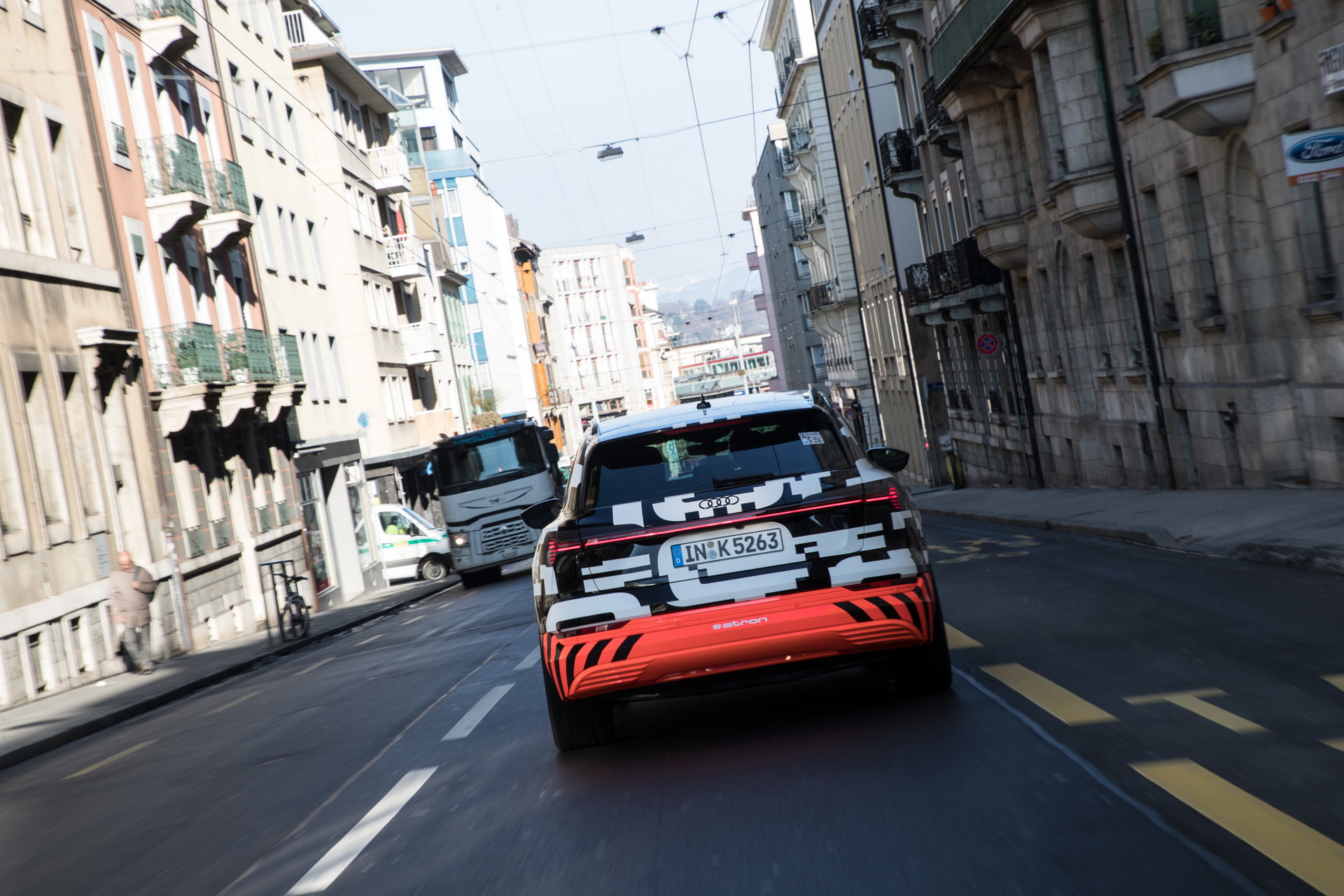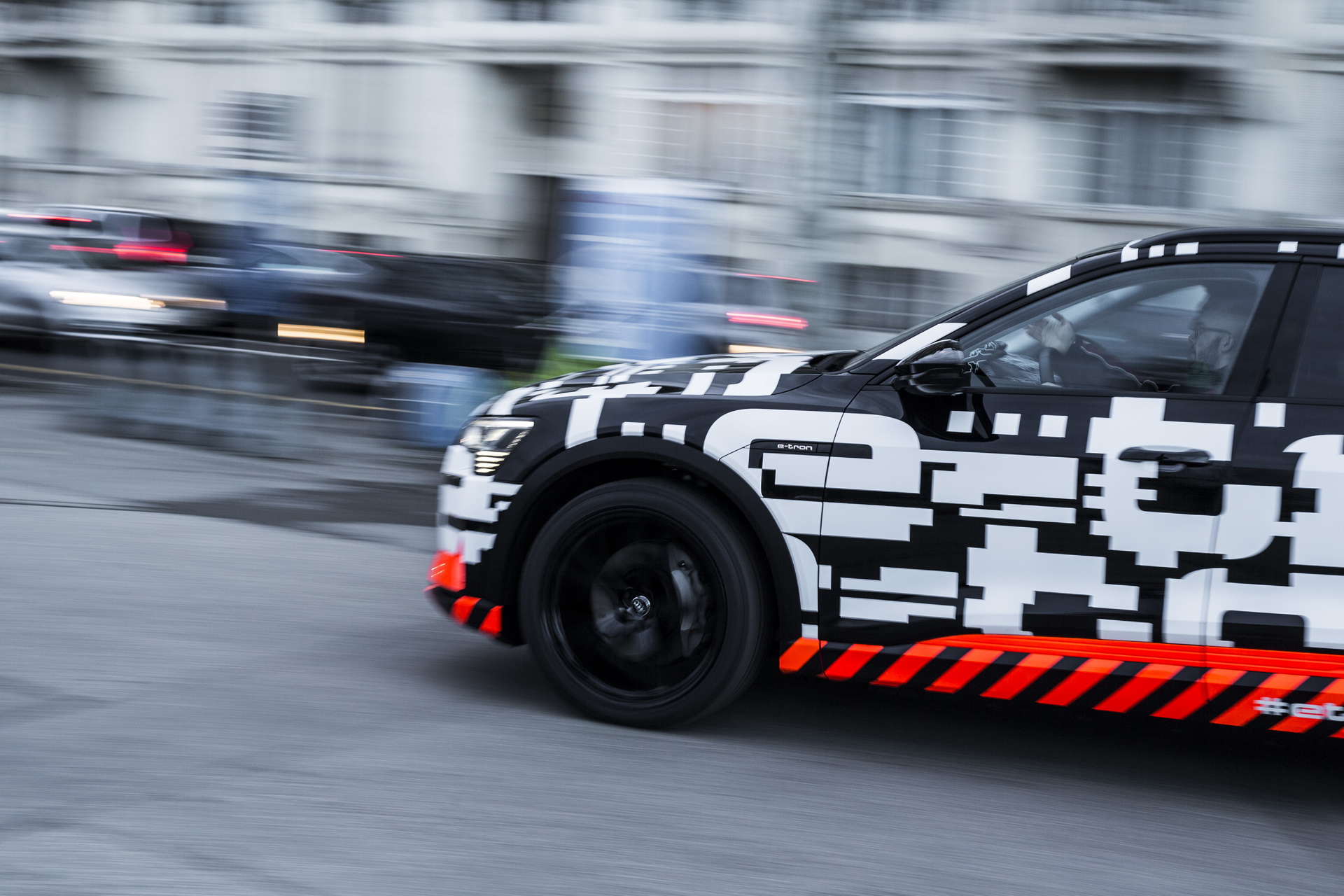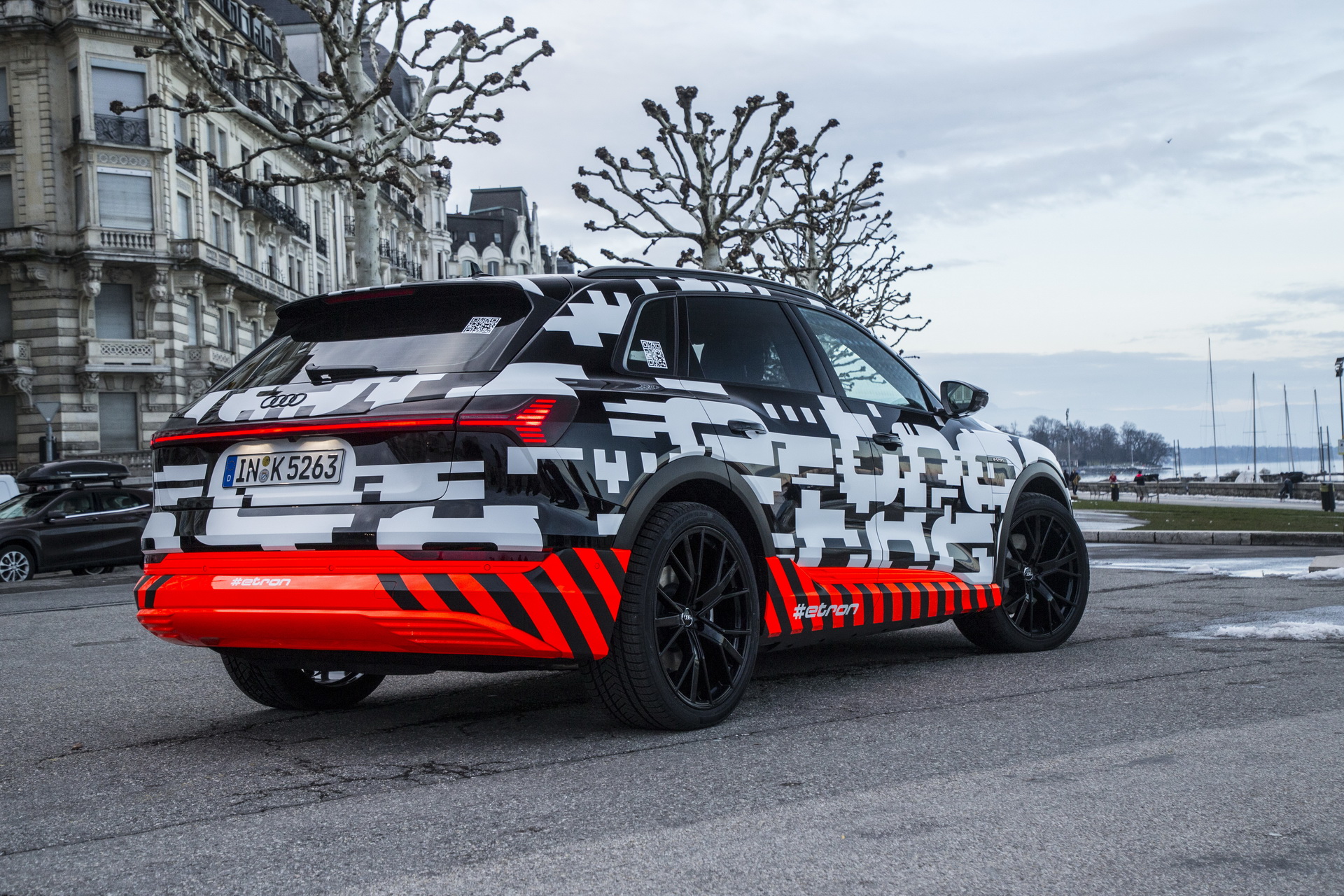Audi has been testing vigorously the fully electric E-Tron SUV at their wind tunnel, clocking more than 1,000 hours on the test rig in order to ensure the best possible aerodynamics of their first series-production EV.
The result is an impressive drag coefficient of 0.28, helping the upcoming Audi E-Tron achieve an everyday range of more than 248 miles (400km) in the latest WLTP cycle.
Aerodynamics is key to an electric car’s performance, with the E-Tron featuring advanced technical solutions to help it glide through the air with the minimum resistance. Among these solutions will be the optional virtual exterior mirrors, a world-first for a series-production car.
The virtual door mirrors are much narrower than standard mirrors and have a small camera integrated to them. The E-Tron’s width is reduced by 15cm when fitted with them and the captured images appear on OLED displays mounted in the transition between the instrument panel and the door. There are three views available: for motorway driving, turning and parking.
A flat belly for better air flow
Other measures include a fully enclosed underbody, with the front and rear being fully panelled. An aluminum plate protects the battery pack against damage from below, with its bolting points featuring bowl-shaped indentations, similar to the dimples of a golf ball. The E-Tron’s underbody dimples make the air flow much better than a totally flat surface.
In addition, Audi has fitted the E-Tron with an active grille that has two electrically operated louvers. When open, the active grille can cool drivetrain components, provide ventilation to the air-conditioning condenser and even channel air into the front wheel arches to the brakes via a pair of ducts.
The Audi E-Tron will be unveiled on August 30th and will go on sale in Europe before the end of the year.




